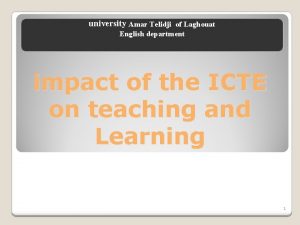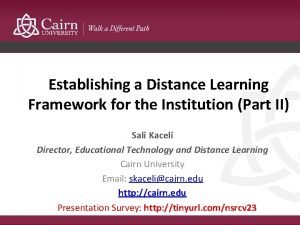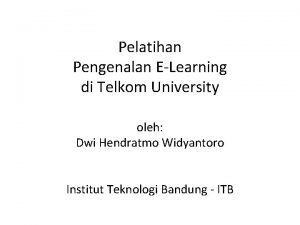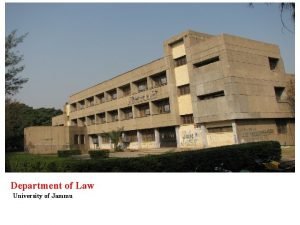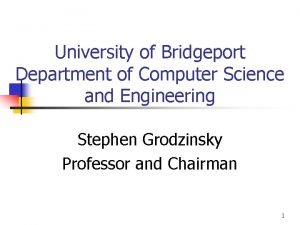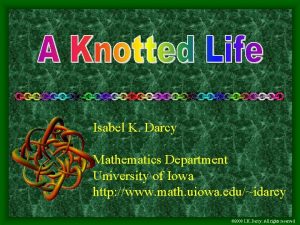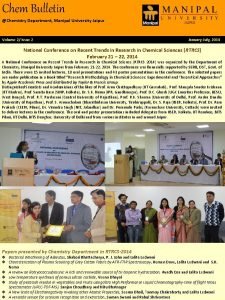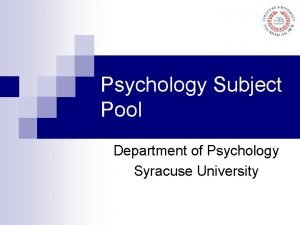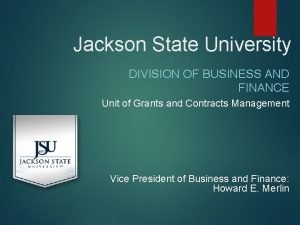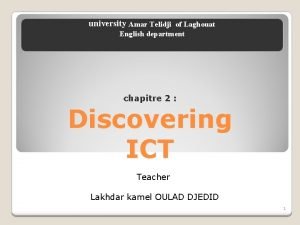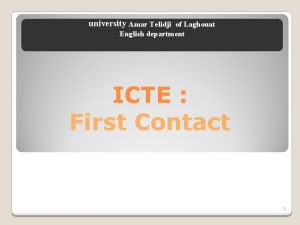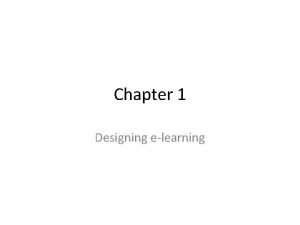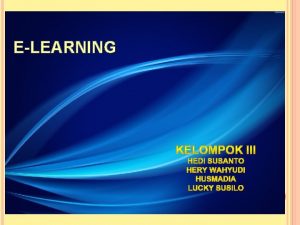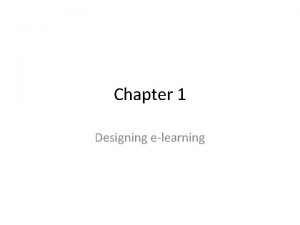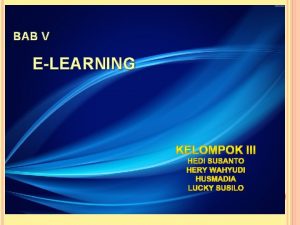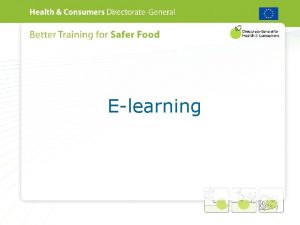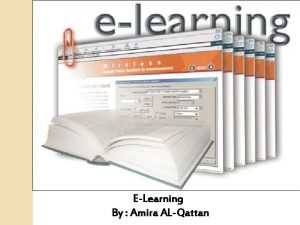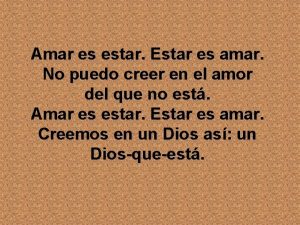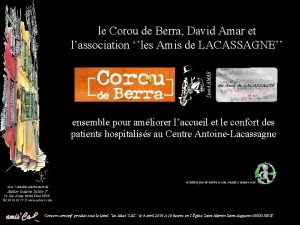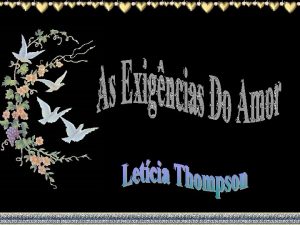university Amar Telidji of Laghouat English department Elearning




















- Slides: 20

university Amar Telidji of Laghouat English department E-learning Presented by Lakhdar kamel OULAD DJEDID 1

objective: discover the principle of “e-learning”, 2

Prerequisite: Communication Technologies: ◦ Networking (internet), ◦ Mobile phones, ◦ E-mail, the web…, 3

Motivation ◦ What if you learned what you need to learn ? ◦ In a way you learned best ? ◦ What if your learning experience was individualized to you ? ◦ If had come to pass…. what would you be like today 4

Motivation ◦ Result: all of you will be graduated from high school with a clear path to higher education, ◦ Future transformation of our education using E-learning 5

Plan History What of Education , is e-learning, comparison, conclusion. 6

History of Education ◦ Video 1 : history ◦ Video 2 : education today/tomorrow 7

Plan History What of Education , is e-learning, comparison, conclusion. 8

What is e-learning E-learning intersects numerous fields of thought and practice, and cannot be trivialized into a simple formula for success. Fundamentally, they all refer to educational processes that utilize information and communications technology 9

What is e-learning As the letter “e” in e-learning stands for the word “electronic”, They include online learning, virtual learning, distributed learning, network and web-based learning. 10

What is e-learning would incorporate all educational activities that are carried out by : ◦ individuals or groups working ◦ online or offline, ◦ and synchronously or asynchronously 11

What is e-learning Individualized self-paced e-learning online refers to situations where an individual learner is accessing learning resources such as a database or course content online via an Intranet or the Internet. A typical example of this is a learner studying alone or conducting some research on the Internet or a local network. 12

What is e-learning Individualized self-paced e-learning offline refers to situations where an individual learner is using learning resources such as a database or a computer-assisted learning package offline (i. e. , while not connected to an Intranet or the Internet). An example of this is a learner working alone off a hard drive, a CD or DVD. 13

What is e-learning Group-based e-learning synchronously refers to situations where groups of learners are working together in real time via an Intranet or the Internet. It may include text-based conferencing, and one or two-way audio and videoconferencing. Examples of this include learners engaged in a real-time chat or an audio-videoconference. 14

What is e-learning Group-based e-learning asynchronously refers to situations where groups of learners are working over an Intranet or the Internet where exchanges among participants occur with a time delay (i. e. , not in real time). Typical examples of this kind of activity include on-line discussions via electronic mailing lists and text-based conferencing within learning managements systems. 15

What is e-learning The effectiveness of e-learning also depends on establishing two-way communication between teachers and learners, and among learners themselves. 16

Plan History What of Education , is e-learning, comparison, conclusion. 17

comparaison 18

Plan History What of Education , is e-learning, comparison, conclusion. 19

conclusion E-learning involves all forms of ICT, across all dimensions of the learning process. To restrict the definition of e-learning to Internet connections via networked computers is to ignore mobile devices and emerging forms of networks and wireless technologies. All these technologies will have significant implications for e-learning. 20
 Department st laghouat
Department st laghouat Amar telidji university
Amar telidji university E learning laghouat
E learning laghouat Amar eu quero aprender a amar
Amar eu quero aprender a amar Points ureteraux
Points ureteraux Cairn university elearning
Cairn university elearning Lms.telkom university.acid
Lms.telkom university.acid Department of law university of jammu
Department of law university of jammu Department of geology university of dhaka
Department of geology university of dhaka University of padova psychology department
University of padova psychology department University of bridgeport it department
University of bridgeport it department Isabel darcy
Isabel darcy Sputonik v
Sputonik v Texas state majors
Texas state majors Department of information engineering university of padova
Department of information engineering university of padova Information engineering padova
Information engineering padova Manipal university chemistry department
Manipal university chemistry department Syracuse university pool
Syracuse university pool Jackson state university finance department
Jackson state university finance department Columbia university department of computer science
Columbia university department of computer science Michigan state university physics
Michigan state university physics
